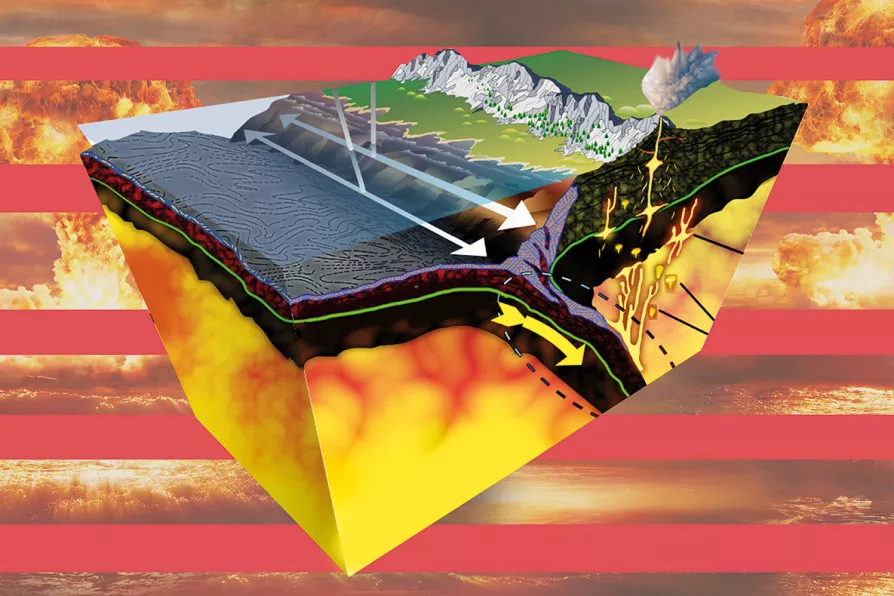Labour’s persistent failure to address its electorate’s salient concerns is behind the protest vote, asserts DIANE ABBOTT


AT the 2022 British Seismology Meeting, a conference which brings together seismologists from around the world, an entire session was devoted to “Nuclear Monitoring.” Talks came from employees of the Atomic Weapons Establishment (AWE), an arms-length body of the British government.
Two AWE sites at Burghfield and Aldermaston are used for research, design and manufacture of nuclear warheads; a third site at Blacknest is used for seismic monitoring of nuclear weapons tests across the globe.
So-called “forensic seismology” has been funded by the British government since 1960. In the 60-odd years that followed, more and more money has been supplied to AWE. By 2023, AWE reported a revenue of £1.5 billion. Although AWE was privatised in the 1990s, it was renationalised in July 2021 and is now wholly owned by the Ministry of Defence.
Despite the British claim to be “a responsible nuclear weapons state,” the fact remains that the manufacture of nuclear warheads continues to be funded by the government.
Not only this, but new warhead facilities are being developed, like Mensa at the AWE Burghfield site or Project Aurora at the AWE Aldermaston site. The latter is one of the Ministry of Defence’s main 2023 projects, and will manufacture an entirely new warhead. Estimated costs are between £2bn and £2.5bn.
In 2021, the British government published an Integrated Review of Security, Defence, Development and Foreign Policy, which included a commitment to increase the number of nuclear warheads possessed by Britain for the first time since the cold war.
Concerningly, the document also included a statement that the government will consider using nuclear weapons in response to non-nuclear threats, vaguely described as “emerging technologies.”
However, the fiction that Britain is “actively seek[ing] to reduce the risks of nuclear weapons, working towards the goal of the global elimination of nuclear weapons” provides a useful justification for the funnelling of research funds into forensic seismology.
The work is claimed to be important for the Comprehensive Nuclear Test Ban Treaty (CTBT). The CTBT was signed in 1996 by 187 signatories, including Britain and the USA, although the latter has not ratified the treaty. It is a multilateral treaty to “ban nuclear weapons test explosions and any other nuclear explosions, for both civilian and military purposes, in all environments.”
The CTBT followed the earlier Partial Test Ban Treaty signed in 1963. Before the signing of this treaty, concerns were raised over how compliance with a “Test Ban” would be monitored and how illicit tests could be detected. Instead of an outright ban on all nuclear tests, the treaty banned tests only “underwater, in the atmosphere, and outer space.”
In effect, this confined nuclear weapons tests to below ground, making them much less easy to observe. It was in this international climate that Britain turned its attention to using forensic seismology to monitor nuclear testing.
An earthquake and an explosion both produce seismic waves. In fact, the field of “active-source seismology” exploits this by using controlled explosives, such as dynamite or Tovex blasts, to produce seismic energy.
This energy can then be picked up by seismometers or other receivers and used to make an image of specific features in the subsurface, like a bat using echo-location. By contrast, “passive seismology” relies on using energy from earthquakes, whose location and frequency content are uncontrolled, to image underground features.
The signals detected by a seismometer can be analysed to determine whether they are due to an explosion. Any underground activity, whether an earthquake or an explosion, releases fast waves of pressure called P-waves.
An earthquake is caused by a sideways slip on a fault. This leads to part of the ground being pushed upwards with compressional force, and part of the ground being pulled downwards by an extensional force.
The signals recorded by seismometers will show both compressional and extensional P-waves. An explosion is a point source, meaning it releases compressional P-waves in all directions away from its location (or hypocentre), but it doesn’t release extensional waves.
Seismometers will therefore all show the same upward compressional motion as the ground is consistently bumped up by the explosion. This enables seismologists to distinguish between an explosion and an earthquake.
Another method relies on the difference between seismic waves that pass through the body of the Earth (“body waves”) and seismic waves that travel along the surface of the Earth (“surface waves”).
The relative size of body-to-surface waves observed for earthquakes is different to the relative size of body-to-surface waves observed for an explosion. This has become one of the most widely used techniques for seismic source discrimination and was pioneered by seismologists funded by the Ministry of Defence at AWE Blacknest.
A 2021 report by forensic seismologists at AWE Blacknest summarising 60 years of research states that “only the DPRK has tested in the past 20 years.”
However, AWE works closely with nuclear weapons laboratories in the US to carry out subcritical nuclear tests (conveniently not banned by the CTBT) at the Nevada underground test site. This sends a message: the US, Britain and its allies are allowed to stockpile, develop and test nuclear weapons.
State enemies such as the DPRK, Pakistan or China must be surveilled and monitored lest they develop nuclear weapons significant enough to pose a threat. One rule for them, another rule for us.
Under these conditions, the British military’s use of seismology to monitor nuclear tests is a tool of surveillance to prevent new countries from developing nuclear capabilities, rather than working towards disarmament. It is yet another reminder that under capitalism, all branches of science and technology remain at risk from co-option as a weapon of war.

While politicians condemned fascist bombing of Spanish civilians in 1937, they ignored identical RAF tactics across the colonies. Today’s aerial warfare continues this pattern of applying different moral standards based on geography and race, write ROX MIDDLETON, LIAM SHAW and MIRIAM GAUNTLETT













